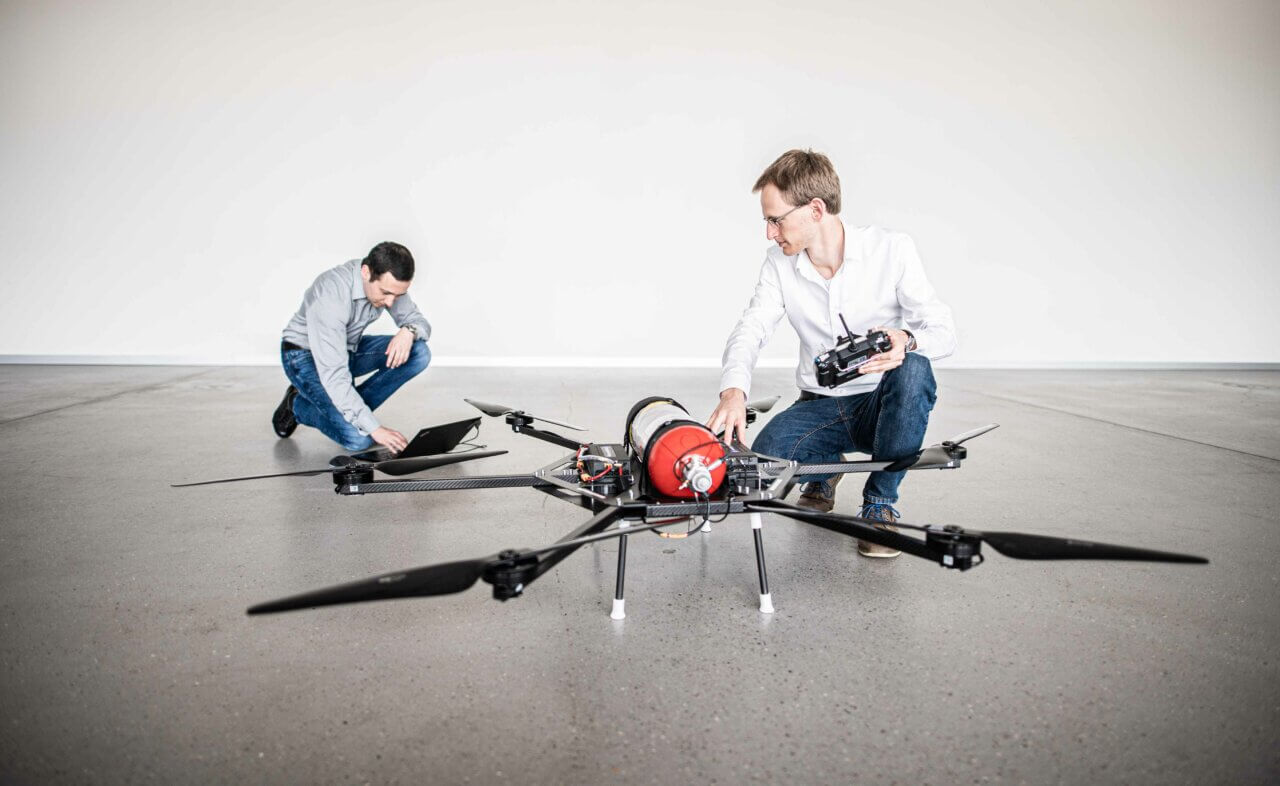ZAL GmbH has already proven that the flight time of a drone can be quadrupled by converting from battery operation to pressure-stored hydrogen in combination with a fuel cell. Instead of a flight time of up to 40 minutes, an increase to over 2 hours could be achieved [read more]. But now the “LiquiDrone” project, funded by the German Federal Ministry of Digital Affairs and Transport (BMDV) with a total sum of almost 900,000 euros, aims to prove that this is only a fraction of what is possible with liquid hydrogen. In June, the four research partners (RST Rostock-System Technik GmbH, BaltiCo GmbH, University of Rostock – Chair of Engineering Mechanics/Dynamics and ZAL GmbH) met for the project kickoff at RST in Rostock and initiated the start of their exciting project.
On the one hand, the goal of the project is the development, construction and integration of a liquid hydrogen tank on the hexacopter ZALbatros. On the other hand, the filling level of the liquid hydrogen is to be determined with the help of an innovative sensor system. As a project result, the partners expect to extend the flight time of the hexacopter to up to 10 hours. A drone of the same design with pure battery operation flies for about 30-40 minutes.
There are a number of challenges to be overcome on the way to achieving this goal. For example, using liquid hydrogen at -253 degrees Celsius is a challenge in itself – especially when developing a system for level measurement. To avoid thermal bridges that would lead to unwanted heat input and loss of hydrogen by so-called “boil-off,” a sophisticated sensor system is used instead to determine the fill level. Another aspect being investigated is the conditioning of the regasified hydrogen taken from the tank so that the fuel cell can always be operated under optimum operating conditions.
However, since a minor heat input into the tank cannot be completely prevented, a small amount of hydrogen will evaporate. This hydrogen is not to be discharged to waste but used to charge an intermediate electrical storage unit by converting it to electricity in the fuel cell. In this way, every gram of hydrogen in the tank is used and helps to extend the flight duration.
The flight duration is also dependent on the design of the energy and propulsion system, whereby the design to be implemented is derived from the mission to be flown. Finding the optimum here is one of the core tasks of ZAL GmbH in the joint project.
If the new liquid hydrogen tank and the optimal design of the propulsion system succeed in increasing the flight duration of the ZALbatros to 10 hours, a full day of operation can be achieved without refueling with hydrogen.





